December 2012 Newsletter
 Thursday, December 13, 2012 at 12:10PM
Thursday, December 13, 2012 at 12:10PM To subscribe to our monthly newsletter click here
|
||||||||||||||||||||||||||||||||
Cabinets | Countertops | Flooring | Installation
Sales & Promotions!

 Up to $45,000 interest free for your project!Finance by Cambria
Up to $45,000 interest free for your project!Finance by Cambria
convenient and easy.


 Thursday, December 13, 2012 at 12:10PM
Thursday, December 13, 2012 at 12:10PM
|
||||||||||||||||||||||||||||||||
 Tuesday, November 20, 2012 at 3:31PM
Tuesday, November 20, 2012 at 3:31PM
|
 Tuesday, August 21, 2012 at 12:00PM
Tuesday, August 21, 2012 at 12:00PM 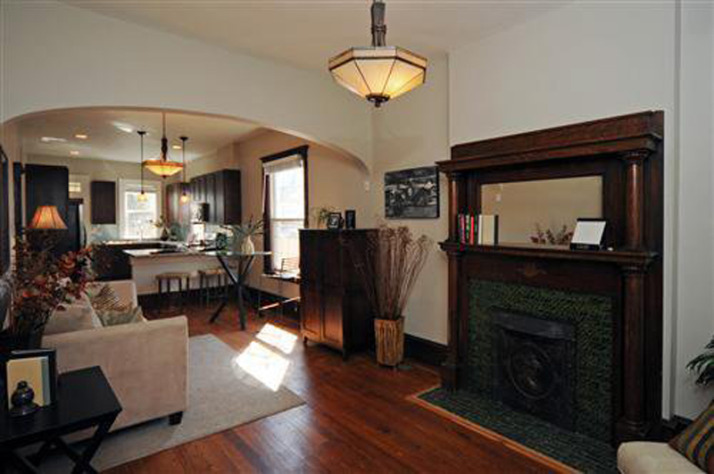 Photo: American Cabinet & Flooring Designer Clay Bernard
Photo: American Cabinet & Flooring Designer Clay Bernard
Begin by considering where the flooring will go and how much traffic, sunlight, and other wear and tear it will get. Vinyl proved tops in our moisture tests and most linoleum. Plastic laminates, and solid wood fared nearly as well. But many engineered woods, as well as some solid woods, and a linoleum product we tested flubbed that test - a serious drawback in a busy kitchen. And while the best vinyls and plastic-laminates fended off wear better than solid wood, they can't be refinished when worn.
Before settling on a product, spend a few dollars on two or three samples. That can be a lot less expensive than winding up with flooring that looks great in a catalog or on a website and then awful in your home. Manufacturers generally match most wood or engineered-wood flooring for color or grain. But variations can occur from one batch to the next, so buy the flooring you'll need all at once. All the plastic-laminate floorboards in a package often have a similar pattern, so you may want to pull from multiple packages to avoid repetition.
To determine how much flooring you'll need, measure the room's square footage by multiplying its length times its width. (Divide an irregularly shaped room into smaller rectangles, calculate the square footage of each rectangle, and then add them together.) Then buy 7 to 10 percent extra to allow for mistakes, bad samples, and waste. You might also want to invest in an extra box of flooring for future repairs or additions.
One way to save is on overstocks. Also, take advantage of mistakes. You can often save on opened or damaged boxes or on flooring with minor flaws that no one will notice.
Hiring a pro to do the installation? You can trim hundreds of dollars off the job by doing the time-consuming prep work like prying up the old flooring, leveling or filling the subfloor, and removing any baseboard that's in the way.
Bamboo is considered renewable because it's a fast-growing grass. The best bamboo floorings we tested area stranded products such as the EcoTimber solid and Teragren engineered flooring, which are made of fibers that are shredded and compressed for strength. Cork floors are made of tree bark in a process that doesn't kill trees.
The best products in every category were also the best overall in our simulated foot-traffic tests. For less busy kitchens, you may want to consider the top engineered wood or bamboo, with its blend of natural veneer and easy installation.
Prefinished wood and bamboo floors cost about 40 percent more than unfinished products. But you're likely to save overall because a factory finish tends to last longer-and paying a pro to apply the finish adds costs, mess, and hassle. Factory finishes are also warranted by the manufacturer.
Vinyl floors with the industry's FloorScore certification emit relatively low levels of volatile organic compounds, substances linked to health problems and pollution. All vinyl we recommend has that certification. For wood flooring, certification by the Forest Stewardship Council and the Sustainable Forestry Initiative offers some assurance that it comes from responsibly managed forests, a plus for the planet. The product and manufacturer must be certified; check the packaging.
Before installing wood or laminate flooring, unpack it and let it sit for one to three days in the space where it will be installed so that its temperature and moisture match the levels in the room.
If you need to heat the room soon after installation, raise the temperature gradually over the course of a week - especially if you have radiant heat - to allow the flooring to adjust. Sweep or vacuum floors with a soft broom or brush, and clean with a damp but not overly wet mop. Check the manufacturer's guidelines for recommended cleaning products. And put felt pads under furniture to prevent scratching.
Though you'll find a growing array of styles, most flooring falls into one of these six types. The type of flooring you choose will depend on your taste, needs, and budget.
Solid Wood
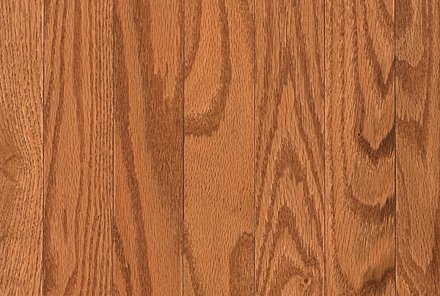 Photo: Mohawk Solid Wood in Oak ButterscotchAdvantages include its natural warmth and the ability to be sanded and refinished several times, along with impressive wear resistance for some. But except for the best solid bamboo, all the solid-wood products we tested dented easily, and some wore quickly and became discolored from sunlight. Pre-finished floors should hold up better than those finished on site, and their warranty comes from the factory, not the installer. But you may not like the beveled edges on many pre-finished products. While unfinished flooring costs about 40 percent less, higher installation costs can offset those savings, since the floor must be sanded and finished over several days to seal it from moisture. Wood flooring shouldn't go in basements and other damp spaces.
Photo: Mohawk Solid Wood in Oak ButterscotchAdvantages include its natural warmth and the ability to be sanded and refinished several times, along with impressive wear resistance for some. But except for the best solid bamboo, all the solid-wood products we tested dented easily, and some wore quickly and became discolored from sunlight. Pre-finished floors should hold up better than those finished on site, and their warranty comes from the factory, not the installer. But you may not like the beveled edges on many pre-finished products. While unfinished flooring costs about 40 percent less, higher installation costs can offset those savings, since the floor must be sanded and finished over several days to seal it from moisture. Wood flooring shouldn't go in basements and other damp spaces.
Engineered Wood
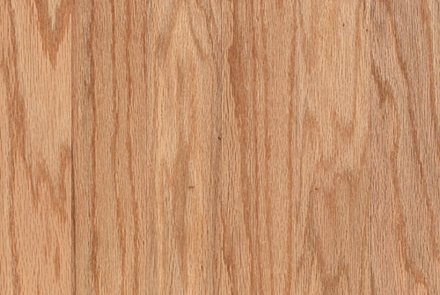 Photo: Mohawk Engineered Wood in Oak Natural
Photo: Mohawk Engineered Wood in Oak Natural
This flooring uses a thin veneer of real wood or bamboo over structural plywood. Most engineered wood doesn't wear as well as solid wood or plastic laminate. It also dents easily, and small spills can damage it. Most can be carefully refinished once, but the veneer on some may be too thin.
Plastic Laminate
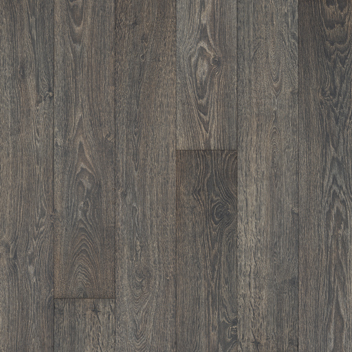 Photo: Mannington Laminate in Black Forest Oak
Photo: Mannington Laminate in Black Forest Oak
Generally made of dense fiberboard with a photo beneath a clear plastic protective layer, laminate can mimic nearly anything from oak to marble. Some brands use real cork beneath the clear layer. But the repetitive pattern on some products compromises realism. The best laminates resist scratching, denting, and discoloration from sunlight better than most wood products, but as with engineered wood, a big spill can cause damage. You may be able to touch up minor flaws, but you'll have to replace the flooring when its outer layer wears through.
Vinyl
 Photo: Shaw Resilient Vinyl Tile in Grey Skies
Photo: Shaw Resilient Vinyl Tile in Grey Skies
This option can be especially good at fending off wear, dents, scratches, discoloration from sunlight, and stains. Easy installation is another plus, especially for tiles or planks, as are more color and design choices than before. Premium vinyl does a better job of imitating stone, tile, and even oak, but even the best products still look like vinyl. And the best can cost at least as much as the best solid wood and laminate floors.
Linoleum
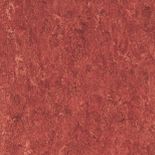 Photo: Armstrong Linoleum in Firebird Red
Photo: Armstrong Linoleum in Firebird Red
Made of linseed oil and wood products, linoleum is a natural, resilient material. Today's products offer far more styles and colors. Linoleum tends to fend off discoloration from sunlight, but resistance to wear, scratches, dents and moisture has varied widely in our tests from product to product. Linoleum can also be relatively expensive.
Ceramic Tile
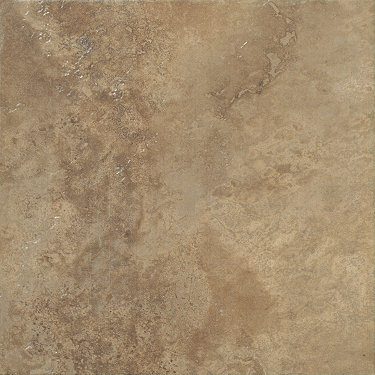 Photo: Shaw Ceramic Tile In Cappuccino
Photo: Shaw Ceramic Tile In Cappuccino
This classic material tends to resist wear, moisture, scratches, dents, and stains. But tiles can crack and grout can stain, and dropped cups and dishes break more easily on its hard surface. It's also relatively expensive and hard to install. While some can now be floated without the usual cement and grout, that makes replacing cracked tiles a challenge.
Different flooring materials require different installation techniques. Homeowners install about half of all flooring. Floated floors that go down without glue or fasteners are easiest. In the case of vinyl, planks or tiles; they are easier to install than sheets.
The national flooring brands listed below are sold by home centers and specialty flooring retailers. Use these profiles to compare flooring by brand.
 Armstrong manufactures flooring under the well-recognized brand names Armstrong and Bruce, and the speciality brand Robbins. Armstrong is also the brand leader in vinyl sheet and vinyl-tile flooring, dominating the category with more than 40 percent of sales. The Armstrong brand also includes wood and laminate, a line of linoleum flooring, and has recently added ceramic tile.
Armstrong manufactures flooring under the well-recognized brand names Armstrong and Bruce, and the speciality brand Robbins. Armstrong is also the brand leader in vinyl sheet and vinyl-tile flooring, dominating the category with more than 40 percent of sales. The Armstrong brand also includes wood and laminate, a line of linoleum flooring, and has recently added ceramic tile.
 Mannington is a one-stop floor manufacture with products in every flooring category. They are among the top three leading vinyl flooring brands and have a foothold in wood, laminate, and porcelain tile. A recent innovation is the Adura Luxury line of premium vinyl tile and planks that mimic the look of hardwood and ceramic tile. Mannington is available only through speciality flooring stores.
Mannington is a one-stop floor manufacture with products in every flooring category. They are among the top three leading vinyl flooring brands and have a foothold in wood, laminate, and porcelain tile. A recent innovation is the Adura Luxury line of premium vinyl tile and planks that mimic the look of hardwood and ceramic tile. Mannington is available only through speciality flooring stores.
This leading carpet manufacturer crossed over to hard-surface flooring through acquisitions and partnerships and now offers wood, laminate, and vinyl flooring.
 Mohawk sells stone flooring under the American Olean brand and laminate under the Quick-Step brand. Their Dal-Tile brand accounts for half of the ceramic tile category sales.
Mohawk sells stone flooring under the American Olean brand and laminate under the Quick-Step brand. Their Dal-Tile brand accounts for half of the ceramic tile category sales.
 In vinyl, Mohawk distributes the Congoleum brand through its vast dealer network. Mohawk flooring is sold through mass home centers and specialty floor stores and is one of the few flooring manufacturers that takes part directly at retail by licensing its trade names - Mohawk Floorz and Mohawk FloorScapes - to locally owned flooring specialty dealers.
In vinyl, Mohawk distributes the Congoleum brand through its vast dealer network. Mohawk flooring is sold through mass home centers and specialty floor stores and is one of the few flooring manufacturers that takes part directly at retail by licensing its trade names - Mohawk Floorz and Mohawk FloorScapes - to locally owned flooring specialty dealers.
This leading carpet manufacturer now offers wood, laminate, and ceramic-tile flooring; it recently expanded its presence in wood through the acquisition of Anderson Flooring. Shaw is available through home-center chains and specialty flooring stores and has its own retail programs - Shaw Design Center and Shaw Flooring Alliance that offer local dealers expanded product lines, display assistance, and training.
Tarkett
Originally a European manufacturer of linoleum, Tarkett is now among the largest flooring manufacturers worldwide. Tarkett offers wood, laminate, and vinyl flooring under its own brand, and luxury vinyl tile from Nafco. Tarket also makes FiberFloor, a water-resistant flooring that combines the qualities of carpet and vinyl. Tarkett is available through mass home centers and specialty flooring retailers.
 Photo: American Cabinet & Flooring Showroom
Photo: American Cabinet & Flooring Showroom
Copyright © 2006-2012 Consumers Union of U.S., Inc.
 Monday, May 21, 2012 at 12:20PM
Monday, May 21, 2012 at 12:20PM 
Four thousand cabinets a day!
That's the current output at Armstrong Cabinet Products, a division of Armstrong World Industries.
In business since 1860, Armstrong World entered the wood products industry in 1998 following its acquisition of Triangle Pacific's cabinet and flooring businesses. Fiscal 2011 net sales for the Lancaster, PA-based corporation were $2.9 billion, with the cabinet division accounting for $136.4 million.
Sales of the company's semi-custom kitchen and bath cabinets are driven by both multi-family as well as single-family new construction and remodeling markets, which are slowly showing signs of improvement. Armstrong sells its cabinet products through independent retailers; like American Cabinet & Flooring, Inc., and building supply distributors nationwide. It recently announced an agreement to also work with 84 Lumber for sales of its products.
Armstrong currently offers four series of cabinet constructions targeted at a variety of price points and environmental requirements:
A proponent of green manufacturing, Armstrong has its Town & Country maple wood cabinets, part of the Origins Series, featured in Disney World's Epcot Vision House in Florida.
All cabinets are manufactured to order at the company's 300,000-square-foot facility, located on 27 acres in Thompsontown, PA. Approximately 450 people work at the cabinet plant.
Panel processing, frame manufacture, drawer box construction, finishing and assembly are done in-house, with cabinet doors and drawer fronts currently outsourced. Approximately 90% of production is kitchen cabinets, with the remaining 10% for bath vanities. The majority of the product is veneered, in species that include: cherry - maple - oak birch - and plantation hardwood.
Armstrong sources the veneered panels with laminated panels laid-up, in-house. Panels are cut-to-size on one of four Schelling saws before being sent to the Andi CNC routers or the company's new Keystone Automation end panel machine for further processing.
In another area, Koch bore and dowel machines are used for frame construction. Armstrong uses a variety of sanders throughout the production and finishing process, including Timesaves, Costa and DMC.
Output at the machines is tracked throughout the plant. "With the lean process, you can see the movement of the product on the floor and know at a glance if you need to produce more. It's a very visual management tool, " says Tim Clontz, plant manager.
Parts are finished before being married up in assembly. The company uses a combination of hand spraying and UV coating, with specialty finishes available on its higher-end lines.
Continually looking for ways to improve, Armstrong recently conducted a value stream mapping of the area, which identified a bottleneck in the door finishing process for topcoating. In a quick resolution to the problem, by early May, the company will have replaced a tow-hang line with a Superfici flatline system, which will provide significant improvements in the workflow speed and process, Clontz says.
Another area targeted for improvement is assembly, Clontz says. Moving from three long lines to five shorter ones will not only speed production, but reduce overall handling on the cabinets, while enabling workers to "have more involvement" in the finished product. "Lean is a never-ending journey," he says. "Every day we're trying to get better."
Armstrong also is aggressive about emphasizing the safety of its employees. Placards throughout the plant illustrate correct methods of operation. In addition, twice daily employees perform stretching exercises as part of the work routine.
Clontz says he is proud of the recognition the cabinet plant received recently for going more than 600,000 hours without an accident. "Our best resource is our employees," he adds.
 Friday, May 18, 2012 at 10:42AM
Friday, May 18, 2012 at 10:42AM Armstrong® Cabinets' eco-friendly OriginsTM line has been included in the specifications for the new LivingHome® C6 - an affordably priced, comfortably sized-home, designed by LivingHomes®; a premier developer of modern, sustainably designed, prefabricated homes. As part of the introduction of this new home design, the C6 model homes, featuring Armstrong® Cabinets, were on display to the public at the Long Beach Performing Arts Center, the TED Conference in Long Beach, CA and at Modernism Week in Palm Springs, CA in February-March 2012.
Renewable resources are important in the kitchen, especially if a homeowner or a business is trying to qualify for LEED or other green building system points. The trend is to move towards green, minimalist and contemporary, especially if it makes sense for the budget.
Armstrong Cabinets remains conscious of environmental needs, as well as good design and pricing, and offers eco-friendly Origins with PureBond®, a urea formaldehyde-free, soy-based adhesive. The hardwood plywood is derived responsibly from managed forests, and then enhanced with a proprietary resin giving it particularly strong bonding and water-resistance qualities. These cabinets combine easy installation and maintenance with the durability of AllwoodTM, Armstrong's top-tier construction with quality features usually found only in custom cabinetry, alongside the environmental benefits of sustainable, low emitting materials.
"The Origins line is especially appealing to green-minded homeowners because the line offers the durability and strength of all plywood construction with the environmental benefits of sustainable, low emitting materials," said LivingHomes CEO Steve Glenn. "It has always been our most important goal to develop an affordable LivingHome, and Armstrong Cabinets is an important component. We believe this is the first production home to feature Cradle-to-Cradle® inspired materials and a LEED Platinum level environmental program. It's also the easiest and fastest LivingHome to build."
For cabinets, it's all about wood. Armstrong's ModernoTM slab door style, selected for the LivingHome C6, is a tribute to traditional tastes, yet refined for modern living. Moderno cabinets have unassuming, effortless beauty, and are ideal for homeowners who love the look of natural hardwood cabinets but prefer the understated wood grain patterns and textures of maple. Known for its close, uniform grain, maple's fine texture lends itself well to either contemporary or traditional styling. Variations on dark/light (espresso, cafe, mocha/creme, or white), warm wood tones are the hot cabinet colors. The most popular stains include naturals, light browns, and darker espresso colors.
"Kitchens have become an all-encompassing, central room to the home environment. Families are changing, and while they may not be "cocooning' anymore, they certainly are 'nesting'. They want their home to reflect the way they really live," said Mel Heintz, Product & Marketing Manager, Armstrong Cabinets. "We continue to give homeowners top-quality choices in kitchen cabinet selections, and that includes environmentally sustainable product options like our Origins line," she said.
The C6 was designed as part of a new partnership with Make It Right, a nonprofit founded by Brad Pitt and renowned architect William McDonough to build 150 Cradle-to-Cradle® inspired LEED Platinum homes in New Orleans' Lower Ninth Ward, the neighborhood hardest hit by Hurricane Katrina. A portion of the proceeds from the sale of each C6 will help support the efforts of Make it Right.

Call Us Today!
303-996-6026Monday - Friday 9:00am – 5:00pm
Saturday 9:00am – 3:00pm

